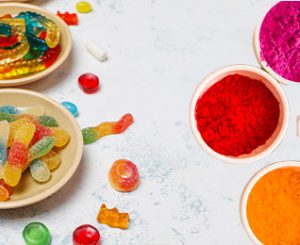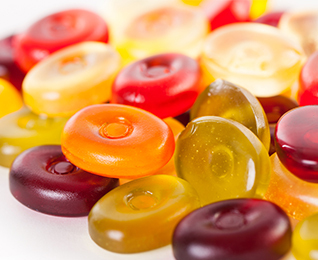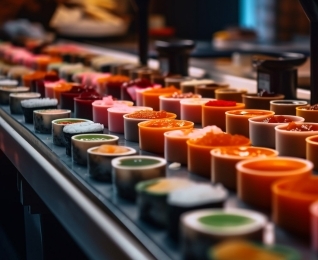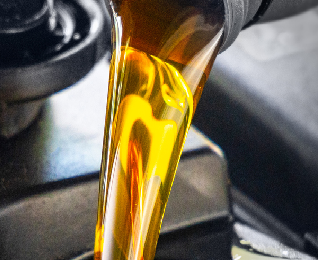Presentation is the key in the food industry...

All About Organic Pigment Powders
Pigments are substances that are able to impart colour to other materials, substances and things. They are colourants that are used to give colour to objects or materials. They are known to be insoluble in water and other solvents. Organic pigments consist of and are composed of carbon chains, compounds and rings. These carbon components make organic pigments very stable.
The majority of pigments used are dry colourants that are often crushed into a fine powder and utilised in the manufacturing industry and the visual arts industry. This powder is combined with a binder which is a mostly neutral or colourless substance that holds and suspends the pigment to create a liquid/fluid colour like paint. This is why there is virtually no difference between pigments and powder pigments, they ultimately are used to achieve the same objective of imparting colour.
Organic pigment powder manufacturers like us; Saujanya Exports, use these very powders to create our colours and pigments. Usually, pigments are manufactured using a simple process that contains washing, drying, powdering and mixing into a colour.
Classification of Pigments
Pigments are divided into 2 categories, namely Natural and Synthetic. Natural pigments are such colourants that can be sourced from natural materials and synthetic pigments are those that are created through chemical and man-made means.
Both Natural and Synthetic pigments are then further categorised into 2 different types, namely Organic and Inorganic pigments. Natural inorganic pigments include substances like iron oxide and lead oxide while examples of synthetic inorganic pigments include sulphides and chromates.
Natural organic pigments are subdivided into colourants sourced from either vegetables or animals. E.g., In the case of the first category, Saffron or Kesar contains crocetin and crocin antioxidant compounds which are also called carotenoid pigments. These pigments are found extensively in nature in plants, bacteria, etc. They impart yellow, red, orange, and purple colours. In the case of the animal category, the pigment Carmine which imparts a bright red colour is sourced from the shells of cochineal insects.
Synthetic organic pigments are sub-divided into 2 types, namely Azo and Non-Azo:
- Azo dyes types are any synthetic organic pigments that contain the functional group ‘―N=N―’ as part of their molecular structures. These can include fast bases, acid orange, etc.
- Non-Azo types are any synthetic organic pigments that do not contain the functional group ‘―N=N―’ as part of their molecular structures. These include precipitated basic dyes, precipitated acid dyes, phthalocyanic pigments, quinonoid vat dyes, quinacridone
Also, synthetic organic pigments are known to be generally sourced from aromatic hydrocarbons like coal tars as well as other petrochemicals.
Types of Organic Pigments
Organic pigments come in the following types:
- Carbon pigments: Examples include Carbon Black which comes from natural gas, Acetylene Black from Calcium Carbide, and Lamp Black which is derived from the soot of imperfect combustion of natural oils.
- Lake pigments: Lake colour or lake pigments are pigments derived from precipitating soluble dyes in metallic salts. Some examples of lake colours include indigo lakes, carmine lakes and rose madder lakes.
- Non-ionic organic pigments: These pigments are usually of azoic type. They include diazo pigments, monoazo pigments which produce colours in the reddish-yellow spectrum, polycyclic pigments, phthalocyanine pigments such as phthalocyanine blues and greens, perylene pigments, perynone pigments, anthraquinone pigments, quinacridone pigments which produce red, violet and oranges, dioxazine pigments which produce violets, thioindigo pigments, isoindolinone pigments which produce yellow, orange and reds, pyranthrone pigments, and quinophthalone pigments.
- Alizarin Pigment: This is produced through the root of the madder plant. It is also called Madder red and it imparts shades of red and red-purple.
Difference between Organic and Inorganic Pigments
- Compared to inorganic pigments, organic pigments are typically brighter and have greater tonal quality. However, this colour usually fades quickly. Because inorganic pigments are likely to retain their colour better than organic pigments when exposed to light and heat, manufacturers tend to favour them.
- Though relatively stable on their own, organic pigments break down and dissolve more readily than inorganic pigments in organic solvents and heat. Therefore, inorganic pigments often exhibit greater dependability and reliability.
- There is a difference in the range of colours that are available in both types of pigments. Inorganic pigments have a greater range of colours available.
- Organic pigments need to go through a complex and long process for production and availability. Due to this manufacturing difference, organic pigments are less economical.
- Organic pigments are harder to disperse in comparison to inorganic pigments.
- In terms of types of fastness, organic pigments possess poor to good light and heat fastness while inorganic pigments possess good light and heat fastness. Though in terms of chemical fastness, inorganic pigments perform poorly while organic pigments perform excellently.
- Organic pigments are generally stronger when compared to inorganic pigments.
- Due to the better reliability and higher number of applications for inorganic pigments, pigment manufacturers, suppliers and exporters tend to lean toward the use of inorganic over organic pigments.
- Though organic pigments are used along with inorganic pigments in a combined form on a lesser scale in many applications. This is done because the resulting quality of colour is good.
Applications and Uses of Organic Pigment Powders
Characteristics of Organic Pigment Powders
- Organic colours are transparent in nature but they still have bright and rich colours. They impart strong colours despite their transparency.
- They possess lightness in weight which helps them create a high volume of colour.
- They possess a small particle size, usually as small as 0.01 microns.
- They possess a certain resistance to wetting as they are insoluble in nature.
- Their tinting strength is high.
We at Saujanya Exports are one of India’s leading organic pigment powder suppliers and exporters. Furthermore, we also manufacture a variety of other dyes, pigments, and colours that have a host of various applications. To know more about us, visit our site at https://www.saujanyaexports.com/







